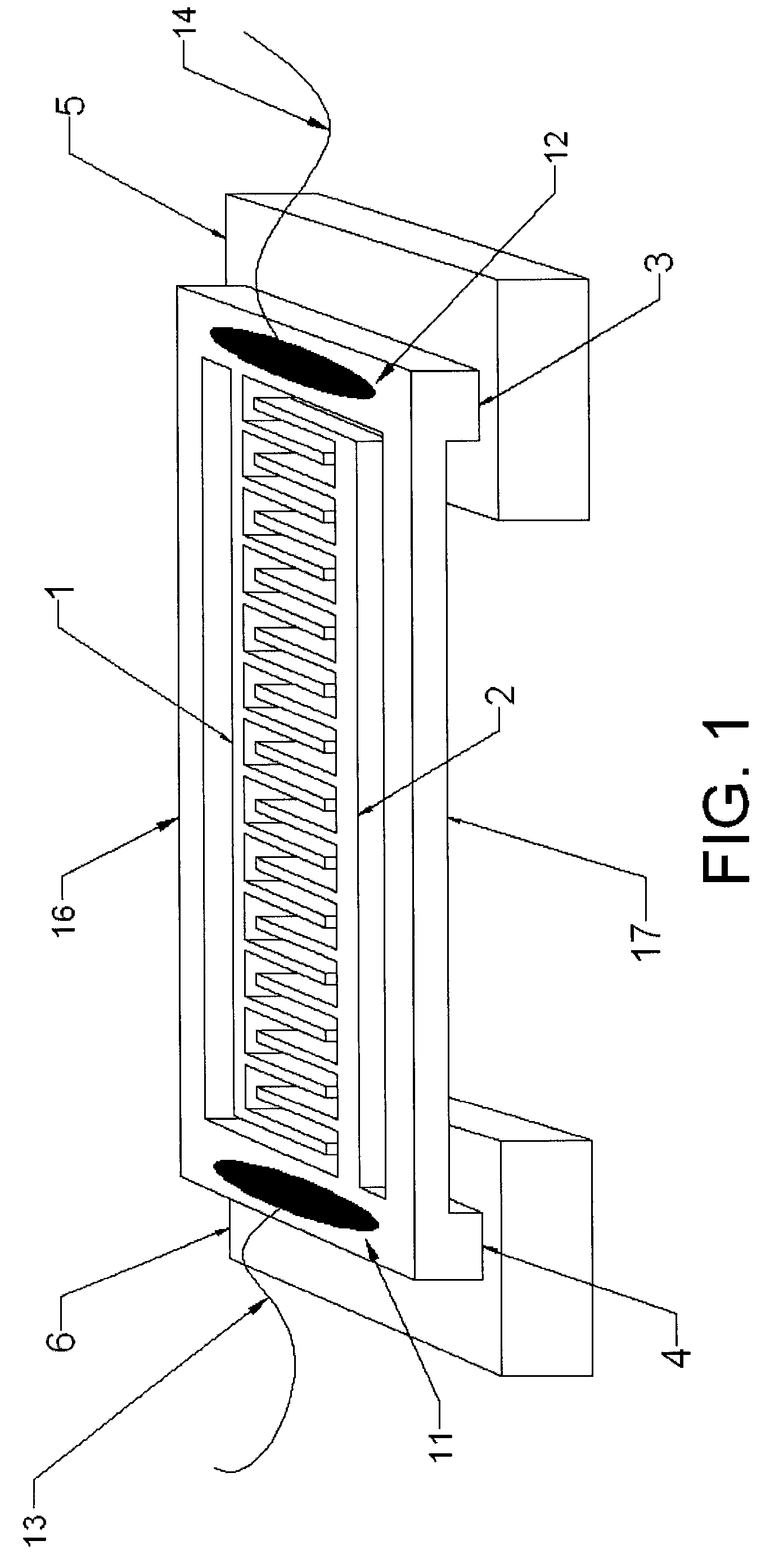MEMS capacitive bending and axial strain sensor
a capacitive bending and axial strain sensor technology, applied in the field of strain sensors, can solve the problems of preventing a clear determination, affecting the quality of the sensor, and not having a sensor that can measure bending and axial strain, and achieves the effect of low power and easy incorporation into the current semi-conductor fabrication process
- Summary
- Abstract
- Description
- Claims
- Application Information
AI Technical Summary
Benefits of technology
Problems solved by technology
Method used
Image
Examples
Embodiment Construction
[0025]The present invention will now be described more fully with reference to the drawings, in which illustrative embodiments are shown.
[0026]FIG. 1 is an perspective view of the three-dimensional micro-electromechanical-systems MEMS capacitive bending and axial strain sensor before it is affixed to a flat substrate in which the movable silicon comb structures 1, 2 containing the suspended interdigitated fingers are fabricated using conventional semiconductor fabrication techniques. Each comb structure 1, 2 is elevated by an anchor 3, 4 incorporated at the end the comb structure 1, 2. A glass pad 5, 6 is anodically bonded to the bottom of each anchor 3, 4 to provide electrical isolation from the substrate and to increase the distance from the substrate to the plane of the interdigitated fingers to improve sensitivity. Electrically conductive epoxy 11, 2 is applied to the top of each anchor 3, 4. Electrical leads or wires 13, 14 are placed in the electrically conductive epoxy 11, 12...
PUM
| Property | Measurement | Unit |
|---|---|---|
| relative permittivity | aaaaa | aaaaa |
| capacitance | aaaaa | aaaaa |
| non-conductive | aaaaa | aaaaa |
Abstract
Description
Claims
Application Information
 Login to View More
Login to View More - R&D
- Intellectual Property
- Life Sciences
- Materials
- Tech Scout
- Unparalleled Data Quality
- Higher Quality Content
- 60% Fewer Hallucinations
Browse by: Latest US Patents, China's latest patents, Technical Efficacy Thesaurus, Application Domain, Technology Topic, Popular Technical Reports.
© 2025 PatSnap. All rights reserved.Legal|Privacy policy|Modern Slavery Act Transparency Statement|Sitemap|About US| Contact US: help@patsnap.com



